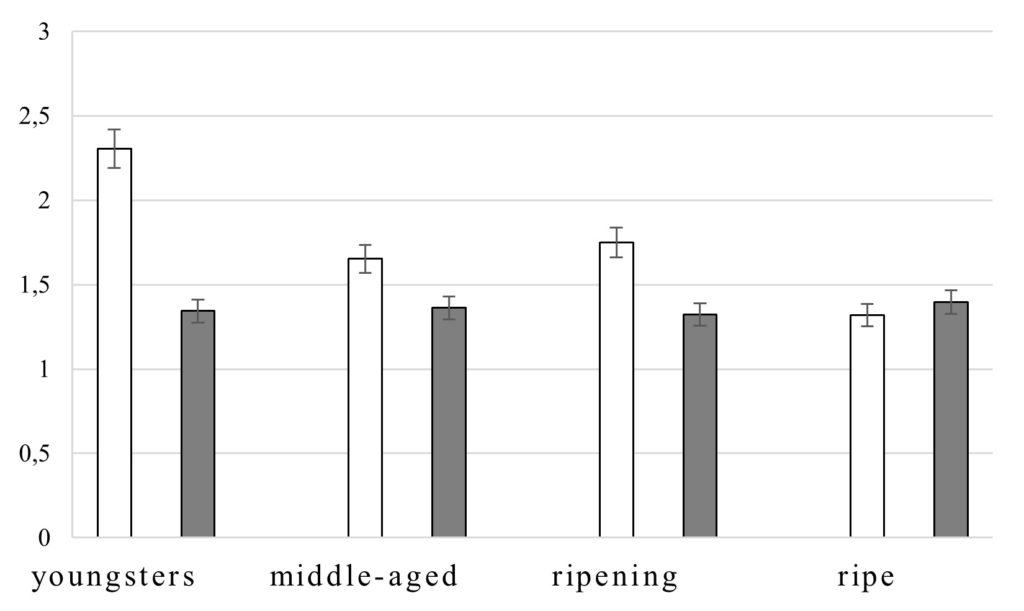This article presents the laboratory research findings from the research project, “Investigation of the Resistance of Black Saxaul (Haloxylon aphyllum) Forms to Gall-Forming Insects (AFoCO/020/2020)” in Kyzylorda Region, Kazakhstan. This two-year project is implemented under the collaboration among AFoCO, NIFoS (National Institute of Forest Science) of the Republic of Korea, and A.N. Bukeikhan Kazakh Research Institute of Forestry and Agroforestry (A.N. Bukeikhan KazRIFA).
In the spring period of 2022, the project team conducted laboratory tests to study the anatomical and morphological features of saxaul plants not damaged by pests. To analyze and understand the changes in the anatomical and morphological characteristics of pest-damaged and undamaged plants, samples were collected from black saxauls of different ages (young, middle-aged, maturing and ripe) at a forest selected by the project team.


Findings
It is noted that the outside of the saxaul plantules is covered with a cuticle, which serves as protection against possible damage from other sources. The epidermis, which also performs protective functions, consists of 2-3 layers tightly adjacent to each other.

a – young plant (up to 10 years old), b – mature plant (30-35 years old)
The data collected showed that the thickness of the epidermis in H. aphyllum plantules generally decreases with age and the extent of the damage. At the same time, it was noted that the epidermis of young plants (up to 10 years old) saw the most damage by gall midges. The epidermis becomes thinner in damaged plants but no damage was detected in mature plants (30-35 years).


The thickness of the palisade chlorenchyma also varies depending on the age of the plants — it is thicker in the plantules of middle-aged and maturing plants than in those of young and mature plants.
At the same time, damage by gall midges has a stimulating effect on the thickening of the palisade chlorenchyma in the plantules of maturing plants (25 years). It is possible that plants of this age are characterized by the manifestation of this protective mechanism, but it is likely that the growth conditions of these plants could also provoke an increase in the thickness of the palisade chlorenchyma.
Parenchymal tissue is represented by large thin-walled cells, which play a water-retaining and nutritional role, combining signs of resistance to adverse environmental conditions and the possibility of a saturated metabolism – with a small area of the photosynthetic surface of needle leaves, plants need to provide themselves with plastic substances. In the parenchymal layer of cells, as in chlorenchyma, one can observe crystal-bearing cells (“druses” of salts), which, according to the literature, are the end products of metabolism in xerophytes and possibly contribute to an increase in the osmotic pressure of cell sap.
The diameter of the vascular cylinder of the plantule increases significantly in middle-aged plants (15–20 years) compared to young plants and then remains practically unchanged. While damage by gall-midge insects causes a significant decrease in the diameter of the vascular cylinder, which may be a consequence of a violation of the water regime, metabolic processes in the plant, and a decrease in the adaptive capacity to the stresses experienced.
Conclusion
The experiment indicates a change in the anatomical parameters of the plantules of representatives of the genus Haloxylon, both depending on age and on damage by gall midges. Damage caused by gall-midge insects causes a reduction in almost all anatomical structures of the plantule of representatives of the genus Haloxylon, which, of course, affects their water regime, photosynthetic and metabolic activity. According to the results of the experiment, we can say that both age-related changes and damage by gall midges affect the decrease in the thickness of the parenchymal tissue of the H. aphyllum plantules. Changes in the diameter of the central vascular cylinder also reflect both age-related changes and damage caused by gall midges.
Contributed by Dr. Yana Krekova, Project Manager of AFoCO/020/2020

